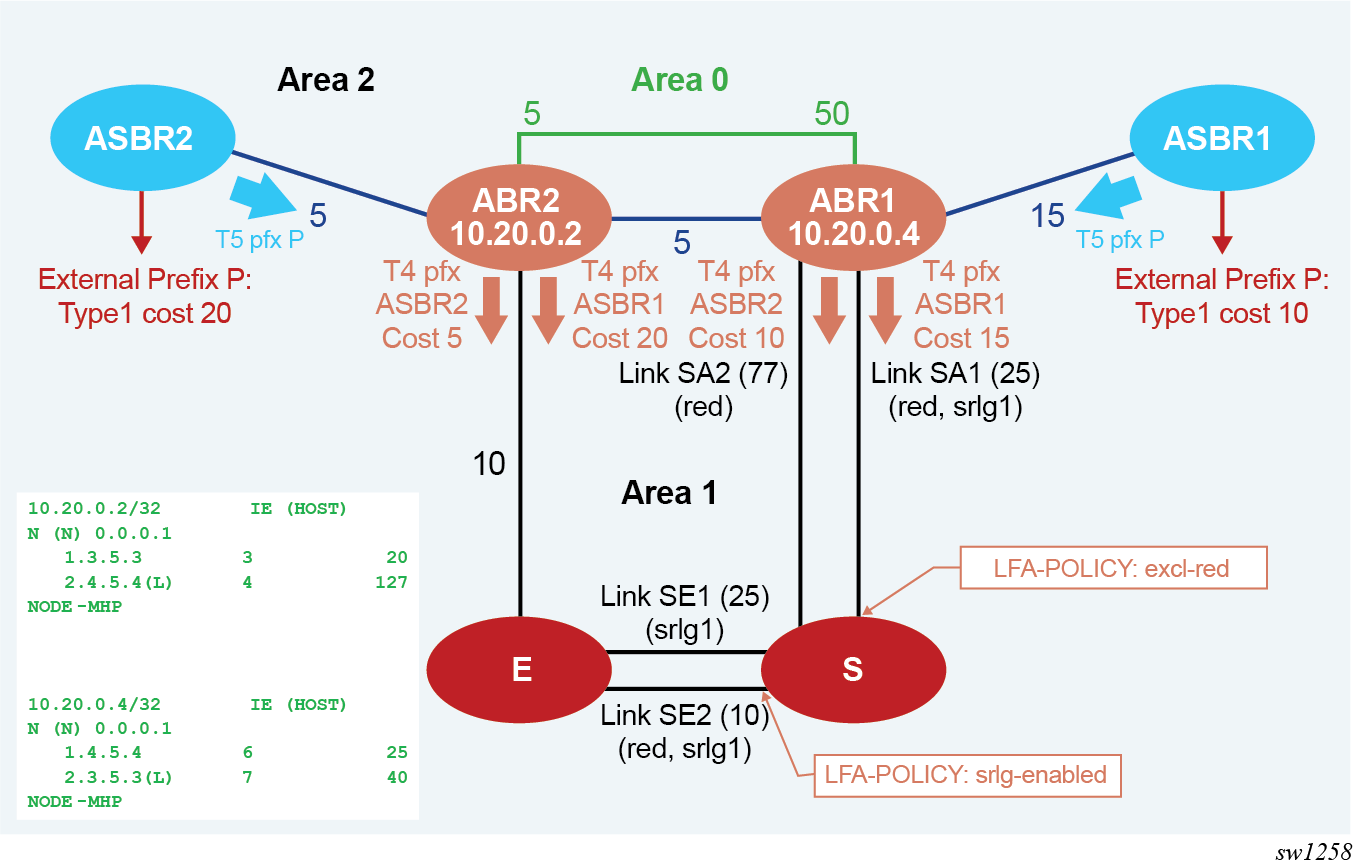When a LFA policy is enabled on an interface, it applies to the backup path computation of all prefixes, intra-area and external, and to each base LFA, TI-LFA, RLFA and the MHP LFA path computations.
Figure: Application of LFA policy to MHP calculation shows the application of LFA policy in the calculation of a MHP LFA backup path. In this example, the topology shows inter-area ASBR nodes that are advertising external prefix P.

Each ASBR advertises within Area 2 a route type 5 with the cost to reach prefix P, which is propagated by ABR1 and ABR2 into Area 1. This also triggers ABR1 and ABR2 to advertise into Area 1 a route type 4 for each of the prefixes of ASBR1 and ASBR2.
Node S resolves prefix P by recursively with the best path of cost 45 using ABR2 or ASBR2 and link SE2. Base LFA finds a link-protect backup path of cost 60 using ABR2 or ASBR2 and link SE1.
When an LFA policy is applied to link SE2 to exclude its SRLG in the backup path computation, the backup path using link SE2 is excluded. Furthermore, ABR1 and ABR2 do not have a link in local Area 1 and, therefore, no path exists using ABR1 to ABR2 exit router in Area 1. As a result, prefix P remains without protection.
Next, the MHP LFA in node S is enabled. Now S can use the backup path of cost 102 using alternate exit ABR1 to reach ASBR1 and link SA2. This MHP LFA backup path satisfies the SRLG constraint.